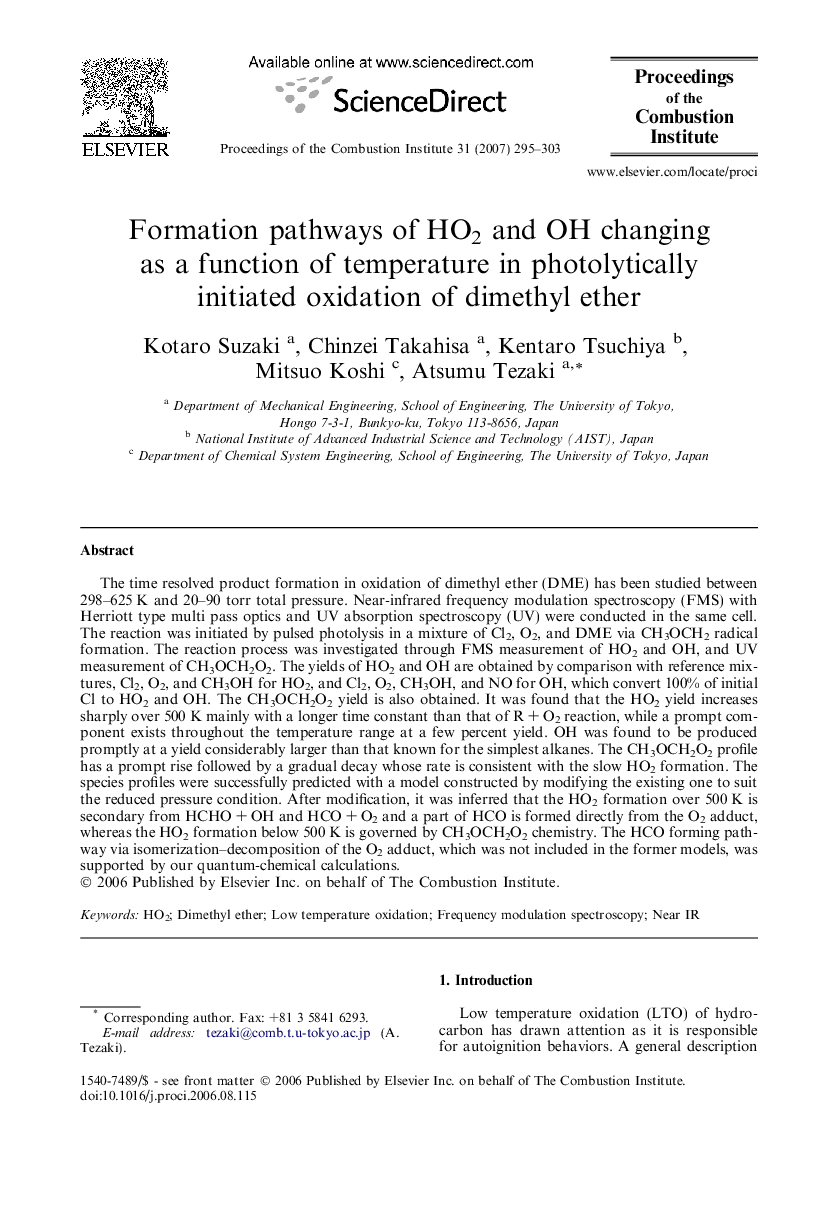| Article ID | Journal | Published Year | Pages | File Type |
|---|---|---|---|---|
| 240732 | Proceedings of the Combustion Institute | 2007 | 9 Pages |
The time resolved product formation in oxidation of dimethyl ether (DME) has been studied between 298–625 K and 20–90 torr total pressure. Near-infrared frequency modulation spectroscopy (FMS) with Herriott type multi pass optics and UV absorption spectroscopy (UV) were conducted in the same cell. The reaction was initiated by pulsed photolysis in a mixture of Cl2, O2, and DME via CH3OCH2 radical formation. The reaction process was investigated through FMS measurement of HO2 and OH, and UV measurement of CH3OCH2O2. The yields of HO2 and OH are obtained by comparison with reference mixtures, Cl2, O2, and CH3OH for HO2, and Cl2, O2, CH3OH, and NO for OH, which convert 100% of initial Cl to HO2 and OH. The CH3OCH2O2 yield is also obtained. It was found that the HO2 yield increases sharply over 500 K mainly with a longer time constant than that of R + O2 reaction, while a prompt component exists throughout the temperature range at a few percent yield. OH was found to be produced promptly at a yield considerably larger than that known for the simplest alkanes. The CH3OCH2O2 profile has a prompt rise followed by a gradual decay whose rate is consistent with the slow HO2 formation. The species profiles were successfully predicted with a model constructed by modifying the existing one to suit the reduced pressure condition. After modification, it was inferred that the HO2 formation over 500 K is secondary from HCHO + OH and HCO + O2 and a part of HCO is formed directly from the O2 adduct, whereas the HO2 formation below 500 K is governed by CH3OCH2O2 chemistry. The HCO forming pathway via isomerization–decomposition of the O2 adduct, which was not included in the former models, was supported by our quantum-chemical calculations.
